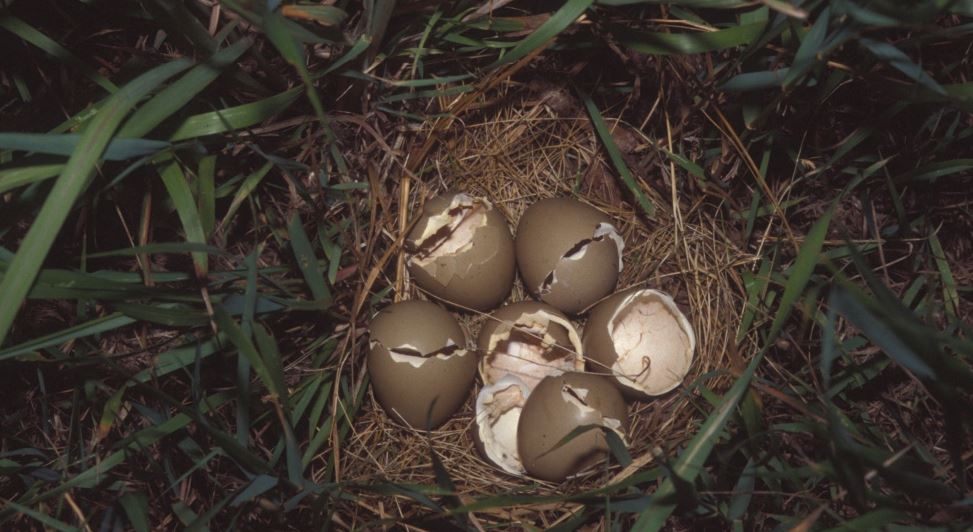As spring advances across pheasant country, ringnecks turn to love and nesting, and the story of next fall's hunting begins
By Jim Wooley, PF Senior Field Biologist (Emeritus)
As the first mild breezes waft north and spring erases the snow from pheasant country, both rooster and hen pheasants’ thoughts turn to love. Nesting time is when the story of next fall’s pheasant population, and your upcoming hunting season, is written.
Ringneck Nesting Habits
Pheasant nesting begins in April, depending on latitude (earlier south, later north) and other factors. Hens leaving winter in poor body condition may delay nesting to recover. A cold, late spring sets the nesting clock back, while a warm spring following a mild winter speeds reproduction. Adult hens with prior experience initiate the earliest nests. An Iowa study of radio-equipped hens in the 1970’s documented a newly-hatched brood on May 2 from a nest initiated on March 23.
Pheasant nests aren’t marvels of construction. A simple depression, loosely lined with dead vegetation and feathers, forms the nest bowl. Laying occurs every 1.3 days until a clutch of 11 to 13 eggs is complete.
Then incubation commences. The hen repositions the eggs frequently, providing equal warmth until a semi-synchronous hatch occurs 23 days later. Chicks emerge, dry out and exit the nest with the hen in just a few hours. The entire process consumes 38 to 40 days.

In Iowa, the pheasant hatch traditionally gains steam through May, peaks the first half of June, and remains significant through the end of July. Production rapidly decelerates through August into early September.
Hens don’t produce multiple broods. However, when initial nests fail, hens commonly try to re-nest -- up to 3 times -- and that’s important. Radioed hens in Wisconsin produced an average of 1.8 nests/hen, and re-nests contributed 40% of brood production. But clutch size and body condition declines with each attempt, and nesting success decreases as summer advances.
Hens that hatch but then lose a brood seldom re-nest. Data from Minnesota and South Dakota indicate that 40 percent to 70 percent of hens surviving the summer successfully produce young, and half of all nests initiated are successful.
Ringneck Nesting Habitat
If there’s such a thing as magical nesting cover, it’s a diversity of tame and native grassland habitats, undisturbed by farming and livestock. The earliest nests occur in last year’s erect, residual vegetation (8-12 inches tall is perfect) found in CRP fields, fencerows, buffers, roadsides and waterways.
Later, the new growth in those areas, in cool-season and native grass pastures, and even in small grain fields, is important for nesting. Grass/legume hay (brome/alfalfa and other mixes) is a population sink. Hens are killed by harvest machinery, and nest success is dismal. But diverse native vegetation hayed or grazed in late summer produces pheasants consistently.
Fox, raccoons, skunks, opossums, badgers, mink and coyotes all find easy pickings in narrow, linear nesting cover. Research shows nests are more successful in larger fields (20 acres plus). Combining several smaller nesting areas into a larger field makes good sense.
Helping Hens: 5 Habitat Takeaways
Create serious winter food/cover complexes so hens come through winter in great shape.
Assure tracts of quality residual cover for early nesting.
Keep plenty of diverse native vegetation on the landscape; it is tops for nesting success.
Plant good pollinator habitat with native grasses and forbs; it is greatfor brood-rearing.
Manage all these habitats on a continual basis.